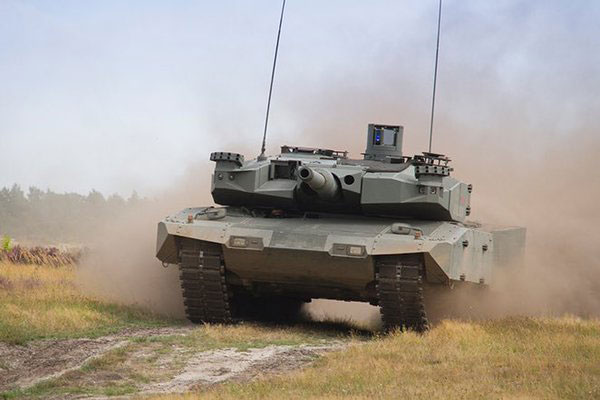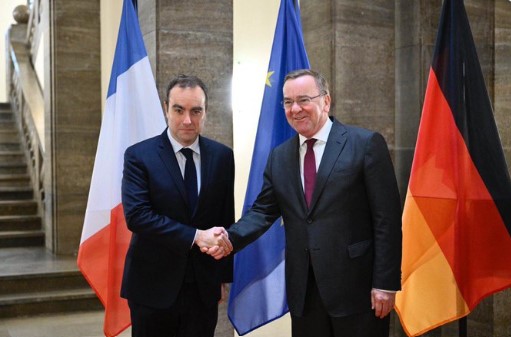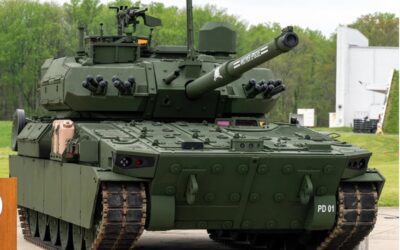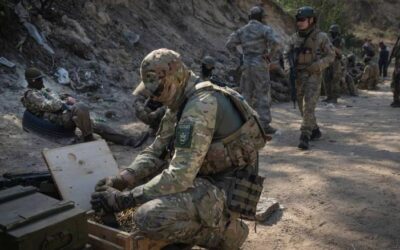The British Royal Navy has named the newly-built Astute-class nuclear-powered submarine HMS Agamemnon. Doing so, the…

The Defence Ministers of Germany and France announced that they have agreed on their joint plan for the development of the future combat platform Main Ground Combat System (MGCS) and specifically on the division of work between the industries, a key point for the program to continue.

Accord avec mon homologue 🇩🇪 @BMVg_Bundeswehr concernant le lancement du projet MGCS, le char du futur.
Charge industrielle partagée à égalité sur ce projet structurant pour notre coopération industrielle, nos armées respectives, la défense européenne et l’OTAN. pic.twitter.com/rZSGh3TIWl
— Sébastien Lecornu (@SebLecornu) March 22, 2024
The MGCS program started in 2017 when the Future Combat Aircraft (SCAF) program, another defence cooperation program between the two countries, was also launched.
The new battle tank in the MGCS chassis is expected to replace the French Leclerc and the German Leopard 2 battle tanks as of 2035, marking a technological leap of a generation thanks to its level of innovation and interconnectivity.
Boris Pistorius and Sébastien Lecorny had last year called for a new push to be given to this Franco-German program which was facing obstacles due to industrial rivalries and conflicting interests of Paris and Berlin.
Also read: MGCS | Hensoldt’s “Game Changer” proposal for the European battle tank – VIDEO
The agreement reached clarifies that, in terms of production, there will be a 50/50 split between the countries’ industries. The agreement will be formalized on April 26 with the signing of a joint document, the two Ministers announced.
Speaking at a press conference in Berlin, the French Defence Minister said that the FCAS fighter jet program was also making good progress, without elaborating on the state of its development.
At this point, it should be noted that the MGCS program involves 2 leading companies in the field of the defence industry, NEXTER (France) and KMW (Germany), which have been members of the KNDS group since 2015, something that is a catalyst for the course of the program. The plan for the MGCS also includes the Greek EODH. Read more in the following article.
Also read: Main Ground Combat System (MGCS) and the participation of Greek company
READ MORE
NSPA | Awards first C-sUAS multinational contract in NATO’s history
The NATO Support and Procurement Agency (NSPA) has approved the first Counter-small UAS (C-sUAS) procurement framework agreement…
US Army | Receives new M10 Booker armored fighting vehicle
The US Army received the first M10 Booker light armored fighting vehicle during a formal ceremony on April 18, 2024, at the Aberdeen…
A reluctant alliance? A different approach to French – Serbian defence relations
It has only been a few months since Croatia started receiving the first of the Rafale fighter jets it ordered from France.
Agamemnon | The new Astute-class HMS nuclear submarine of the Royal Navy
The British Royal Navy has named the newly-built Astute-class nuclear-powered submarine HMS Agamemnon. Doing so, the…
NSPA | Awards first C-sUAS multinational contract in NATO’s history
The NATO Support and Procurement Agency (NSPA) has approved the first Counter-small UAS (C-sUAS) procurement framework agreement…
USA | Signs bill on military aid to Ukraine
US President Joe Biden has signed a bill providing Ukraine with billions of dollars in new aid for its war with Russia, marking a rare…
Armenian Genocide Remembrance Day
On this day, 109 years ago, the genocide of the Armenian people by the Ottoman Empire began, with April 24 being the day of…
United Kingdom | Increase in defence spending
Britain will gradually increase its defence spending to reach 2.5% of GDP by 2030, Prime Minister Rishi Sunak announced…




















